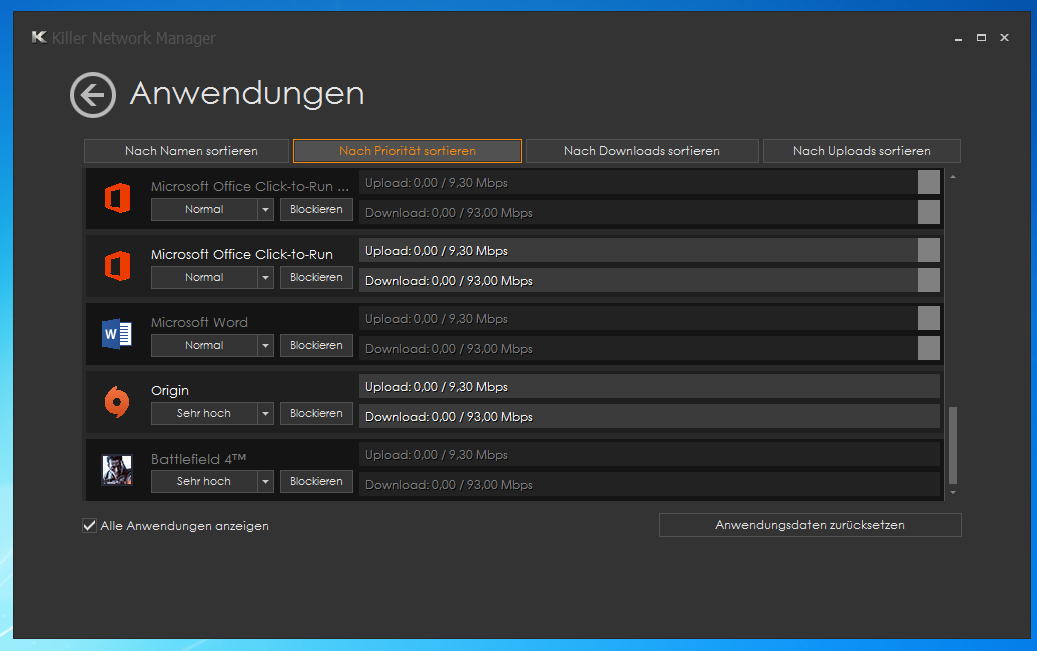
- #INSTALLING KILLER NETWORK DRIVERS WITHOUT MANAGER INSTALL#
- #INSTALLING KILLER NETWORK DRIVERS WITHOUT MANAGER UPDATE#
- #INSTALLING KILLER NETWORK DRIVERS WITHOUT MANAGER DRIVER#
- #INSTALLING KILLER NETWORK DRIVERS WITHOUT MANAGER UPGRADE#
- #INSTALLING KILLER NETWORK DRIVERS WITHOUT MANAGER WINDOWS 10#
#INSTALLING KILLER NETWORK DRIVERS WITHOUT MANAGER UPDATE#
Right-click or long press on the Qualcomm adapter and select Update driver. Within Device Manager, find Network adapters and expand it to see all the currently installed adapters. Type "device manager" and open Device Manager. Select Start or the search box in the task bar.
#INSTALLING KILLER NETWORK DRIVERS WITHOUT MANAGER DRIVER#
If you are not offered the driver from Windows Update, we recommend you try the following steps:

#INSTALLING KILLER NETWORK DRIVERS WITHOUT MANAGER INSTALL#
Select Check for Updates again, it should be offered and install as expected. If you are offered Qualcomm Wi-fi drivers and they install successfully, then you should now be able to update to Windows 10, version 1903. You should first try manually checking for updates.
#INSTALLING KILLER NETWORK DRIVERS WITHOUT MANAGER UPGRADE#
To safeguard your upgrade experience, we have applied a hold on devices with affected Qualcomm driver from being offered Windows 10, version 1809, Windows 10, version 1903, or Windows 10, version 1909, until the updated driver is installed. Devices with affected driver versions might experience loss of Wi-Fi connectivity after updating to a newer version of Windows 10. Microsoft has identified compatibility issues with some driver versions for certain Qualcomm Wi-Fi adapters. Windows 10, version 1909 and Windows 10, version 1903:
#INSTALLING KILLER NETWORK DRIVERS WITHOUT MANAGER WINDOWS 10#
If you are trying to update to the Windows 10 November 2019 Update (Windows 10, version 1909), the Windows Feature Update (Windows 10, version 1903), or the Windows 10 October 2018 Update (Windows 10, version 1809), you may encounter an update compatibility hold and receive the message, "Qualcomm wifi driver: Your PC has a driver that isn't ready for this version of Windows 10. The meaning of the other risk levels is internal to the development team of the network-manager snap.Windows 10, version 1909, all editions Windows 10, version 1903, all editions Windows 10, version 1809, all editions More. Despite the unfortunate name (there are historical reasons for that) it is the oldest version.Īll these tracks are available with the usual risks: stable, candidate, beta, and edge, but only the stable version should be used for production devices. latest : Contains upstream 1.2.2 and has a core16 base.More modern releases have changed the convention so the track now refers to the base snap. The track name refers to the upstream version. Nowadays, this is the one installed by default if the channel is not specified when running snap install. 1.10 : Contains upstream 1.10.6 and has a core18 base.The track name refers to the base snap and it is the convention being used at the moment. 20 : Contains upstream 1.22.10 and has a core20 base.The network-manager snap has currently three tracks: Now you have NetworkManager successfully installed. - Service for snap application workmanager Loaded: loaded (/etc/systemd/system/ enabled vendor preset: enabled) Active: active (running) since Thu 10:19:01 UTC 6min ago Main PID: 2850 (NetworkManager) Tasks: 3 (limit: 569) CGroup: /system.slice/ └─2850 /snap/network-manager/564/usr/sbin/NetworkManager -config-dir=/var/snap/network-manager/564/conf.d/ -config=/snap/network-manager/564/etc/NetworkManager/nf -log-level=INFO -no-daemon.

You can check its current status with $ systemctl status Once the installation has successfully finished the NetworkManager service is running in the background. Similarly, there is a network-manager:wpa plug in case we would want to use a custom wpa supplicant snap instead of the one supplied by the core snap (this is not generally recommended). NOTE: The network-manager:modem-manager plug only gets connected when the modem-manager snap is installed too. You can verify this with: $ snap connections network-manager Interface Plug Slot Notes dbus network-manager:wpa - firewall-control network-manager:firewall-control :firewall-control - hardware-observe network-manager:hardware-observe :hardware-observe - login-session-observe network-manager:login-session-observe :login-session-observe - modem-manager network-manager:modem-manager modem-manager:service - network network-manager:network :network - network-manager network-manager:nmcli network-manager:service - network-observe network-manager:network-observe :network-observe - network-setup-control network-manager:network-setup-control :network-setup-control - network-setup-observe network-manager:network-setup-observe :network-setup-observe - ppp network-manager:ppp :ppp. You can install the snap with the following command: $ snap install network-manager network-manager (1.10/stable) 1.10.6-7 from Canonical✓ installedĪll necessary plugs and slots will be automatically connected within the installation process. It can be installed on any system that supports snaps but is only recommended on Ubuntu Core at the moment. The NetworkManager snap is currently available from the Snap Store.


 0 kommentar(er)
0 kommentar(er)
